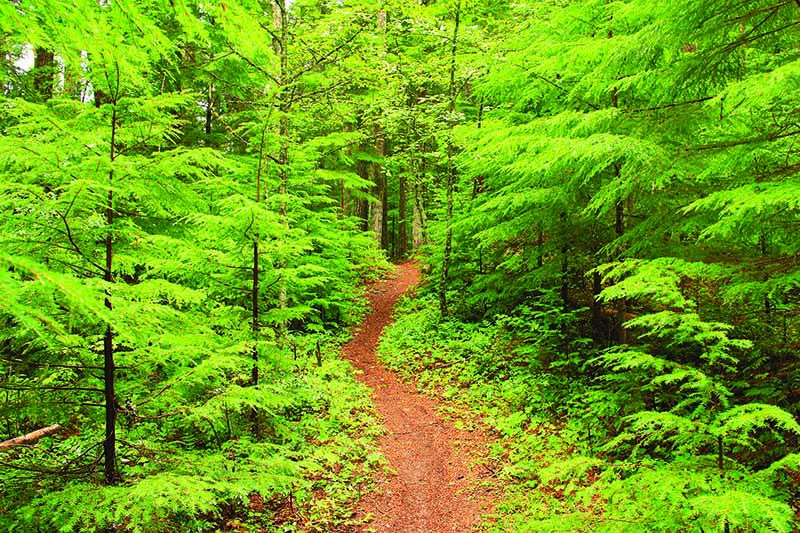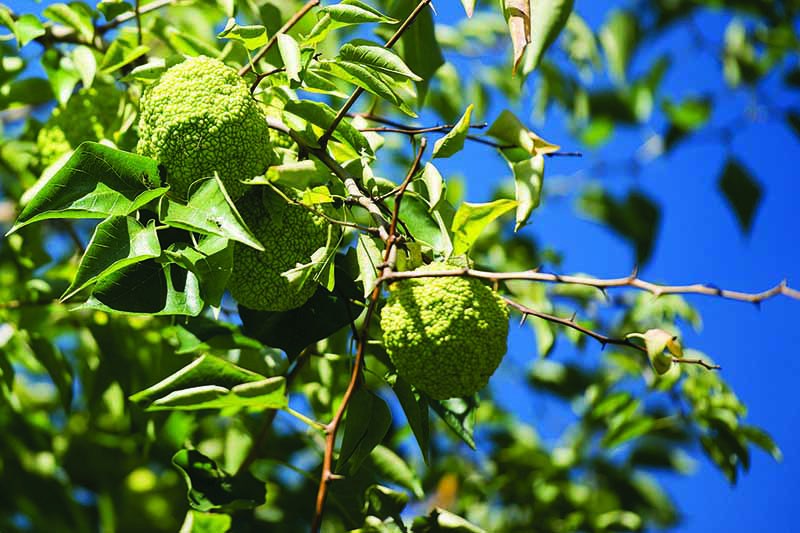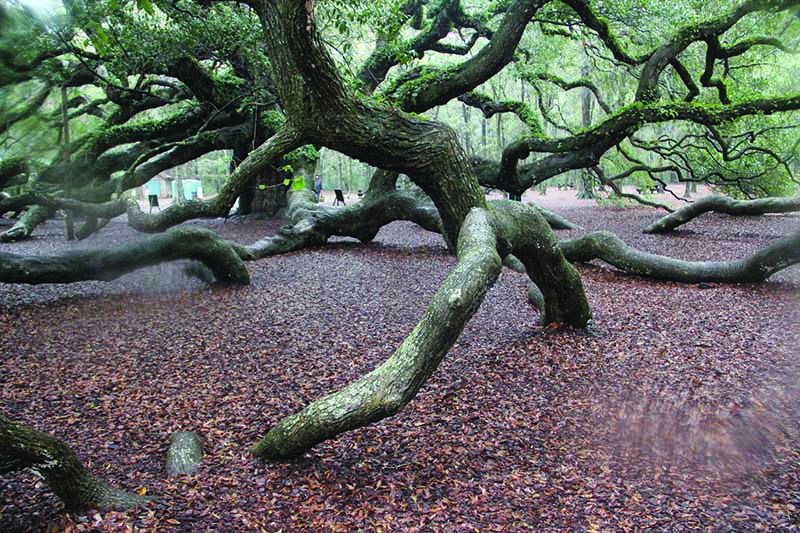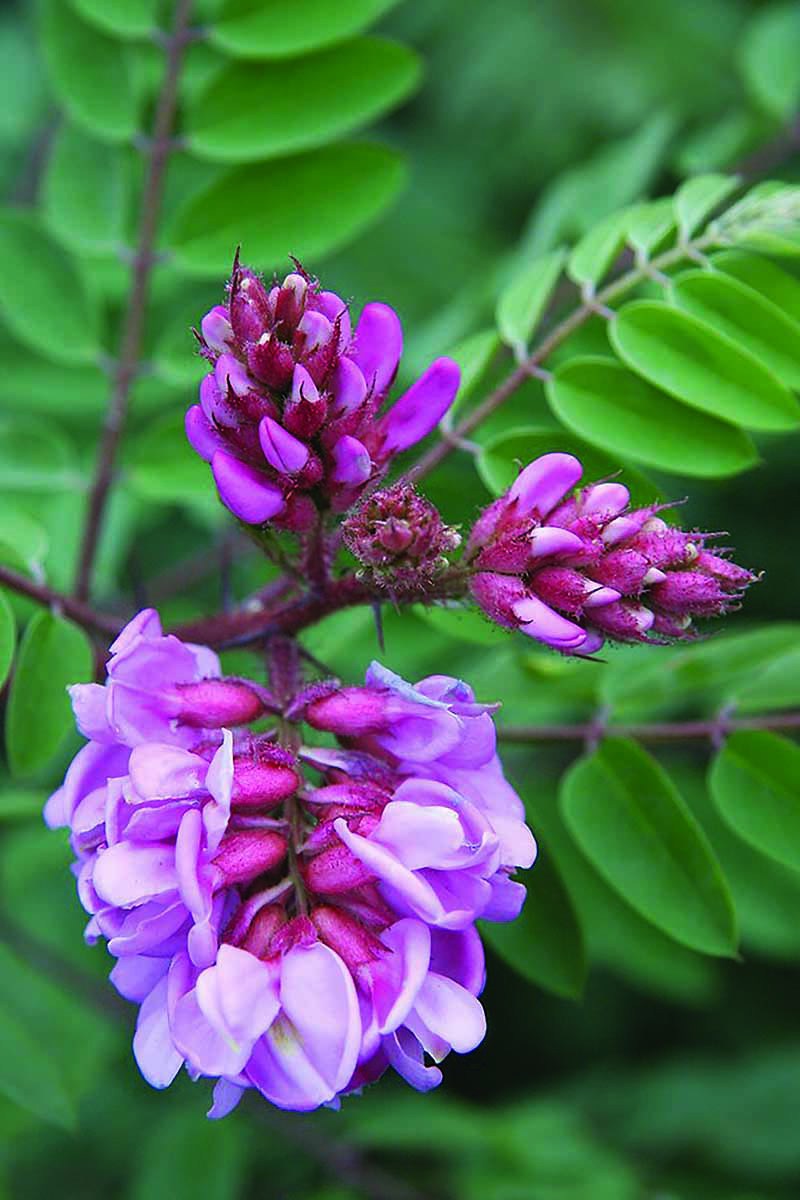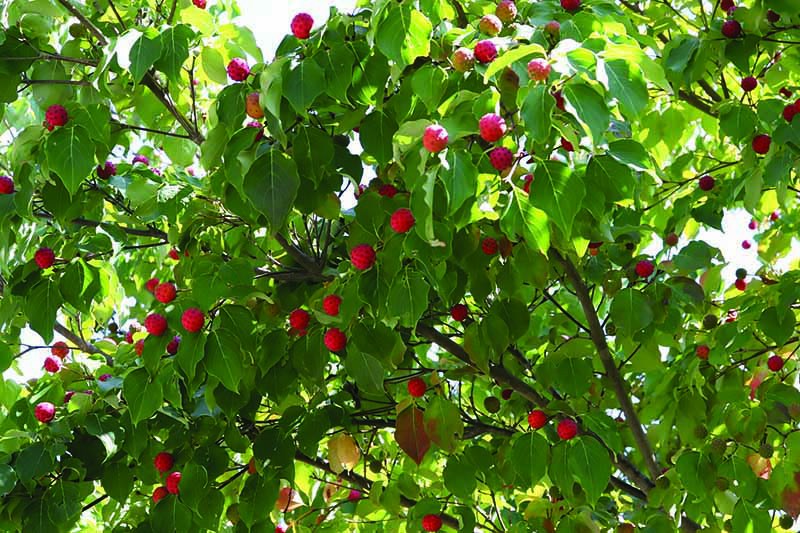From the scaly-coned Pacific Silver Fir to the spiny-barked Devil’s Walking Stick, readers will discover over 540 unique native species and almost 2,500 color photos. If you read our review of the “National Audubon Society Birds of North America,” you know you’re in for a treat with the scope and quality of an Audubon book. In this article, we take a deep dive into the Society’s most authoritative work to date on the trees of North America. Their expansive and influential conservation efforts are aimed at restoring and preserving habitats and the diverse wildlife that occupy them, advocating the use of native plants, and promoting public policies that bring people and nature into harmony. Avenues of outreach include local chapters, nature centers, advocacy programs, books, and apps. To date, there are over 600,000 Society members. “National Audubon Society Trees of North America” is the collective work of a host of scientists and photographers who classify, photograph, and describe every species in detail, as well as the designers who compile the material and present it in a user-friendly, eye-appealing format. This new book is a comprehensive resource that updates and combines content from “National Audubon Society Field Guide to North American Trees: Eastern Region” (1980) and “National Audubon Society Field Guide to North American Trees: Western Region” (1980).
First Impressions
There’s been a pocket guide to trees of the eastern United States in my house for as long as I can remember. My grandmother was a scout leader, and we were fortunate to have a ready supply of nature books. What I’d never had was one listing all the native North American species, so I couldn’t wait to open the new Audubon guide. As is my habit, I opened randomly, and lo and behold, there was the Osage-orange. I’d known it as “monkey orange” since I was a child. I devoured the description, discovering that it’s native to Texas, and couldn’t wait to read more.
Cover to Cover
This latest work in the Audubon collection is “flexibound,” with a cover that is heavier than a paperback, but bendable, rather than firm like a hardback. Some vendors categorize it as a hardback. The dimensions are 7.31 by 1.03 by 9.46 inches, and there are 592 pages filled with glossy photos and reader-friendly text. With a weight of just over two and a half pounds, it is heavier than your average field guide, but I think it can be toted as well as used as a desk reference. Species are arranged by taxonomy, or the order in which they appeared on earth. The first species you’ll encounter are members of the order Pinales, or conifers, and the final is Apiales, or flowering types. Taxonomy is a fluid biological science of classification that evolves as more is learned. The listings in this volume are current as of the time of publication. A handy color coding of the page edges aids in quick reference by taxonomic order.
An Expansive Line Up
In the table of contents, we find listings for “Introduction,” “Identification,” “Conservation,” and “Tree Biology Topics.” They’re quite informative must-reads, as we’ll see shortly. These are followed by taxonomic orders and the families they contain. For example, under “Lamiales,” we find the Olive, Acanthus, Trumpet Creeper, Mint, and Figwort families. The Introduction opens with a description of the Society and an invitation to readers to visit the website. Here you can enter your zip code to find North American plants that benefit the wildlife that live in your locale. It goes on to provide an overview of trees in general, including structure, function in the environment, aesthetic value, and role in the food and manufacturing industries. Did you know that photosynthesis sometimes takes place in bark? Or that approximately half of our planet’s oxygen supply comes from trees? A section called Identification follows. Here readers learn how leaves, bark, fruits, flowers, and roots all help to define a species. The Conservation section introduces readers to seven conservation status designations created by the International Union for Conservation of Nature’s Red List of Threatened Species. They range from “Least Concern” to “Extinct.” And it is stressed that “…non-native landscapes do not support functional ecosystems that support our native wildlife (p. 14).” In Tree Biology Topics the Society defines a tree as: “A woody perennial plant, typically having a single usually elongated main stem, growing to considerable height, generally with few or no branches on its lower part (p. 15).” Informative write-ups on the challenges of classifying trees, and natural processes of forest regeneration are followed by topics including evolutionary progression, vegetative communities, naturalized versus invasive species, the “wood-wide-web,” and the effect of threats such as climate change. With this ample background, readers are well-equipped to delve into the detailed species descriptions that come next and make up the bulk of the book. Let’s take a look!
Detailed Entries
For each species, there is a one-page entry that includes text and at least two color photos. It begins with species highlights and continues with the following sections:
Alternate Name (where applicable)DescriptionFlowers (where applicable)Fruit (where applicable)Caution (where applicable)HabitatRangeUsesSimilar SpeciesConservation Status
In addition, a small range map indicates where there are dense and light populations of a species, as well as where it has naturalized. The all-inclusive “National Audubon Society Trees of North America” winds down with a useful section called “Tree Families.” It is an extension of the introductory sections that summarizes groups of related species by taxonomic order and common name. For example, “Platanaceae – Sycamore.” I recommend reading all supplemental material prior to using the species entries portion of the book, as they foster a greater appreciation and understanding of trees in general. And finally, there is a glossary of genre-specific words, such as “keel,” a ridge on a fruit or seed, and “scurfy,” or having small scales. An index with cross-referenced common and Latin names, and photo credits conclude this extensive reference work. Years ago, an arborist friend of mine visited my home one autumn and recommended I remove a yellow-leafed maple. It was so pretty I kept it. Little did I know, it was a Norway maple, a non-native and invasive water hog that would suck the ground dry in a drought, leaving my perennials to wilt and wither. And that’s when its roots weren’t already strangling everything in its path. National Audubon Society Trees of North America If you enjoyed reading about this exciting new guide to native trees, you may want to read more book reviews, including:
Celebrating 40 Years: A Review of the Encyclopedia of Country LivingLaugh Your Way Through Chicken Husbandry with “The Chicken Chick’s Guide to Backyard Chickens”Teaming with Microbes: A Fresh Review for Today’s Gardeners

